DAINTREE RAINFOREST PLANTS

THE DAINTREE RAINFOREST IS SPECIAL
This tropical rainforest ecosystem is one of the most complex on earth. Its plant diversity and structural complexity is unrivalled on the Australian continent and represents the origins of our more familiar ‘Australian’ flora.
The Daintree Rainforest is the oldest intact tropical lowland rainforest in the world, with the greatest diversity of plants and animals found anywhere in Australia. It is host to 13 of the world’s 19 primitive flowering plant species and home to 28% of frogs, 65% of ferns, 40% of birds and 34% of mammals in Australia
The team at the Discovery Centre are ‘conservation custodians’ of this very special World Heritage icon.
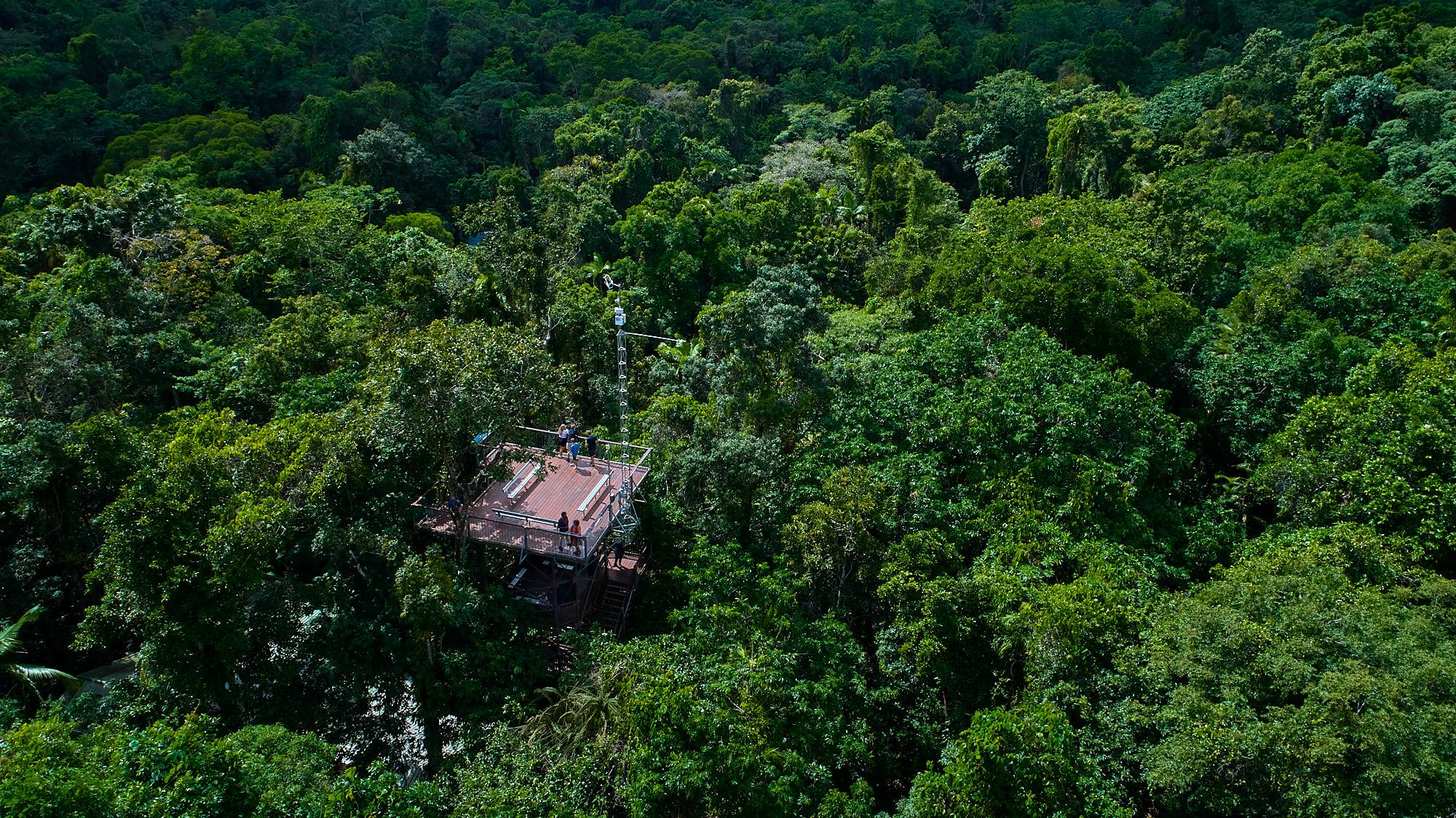
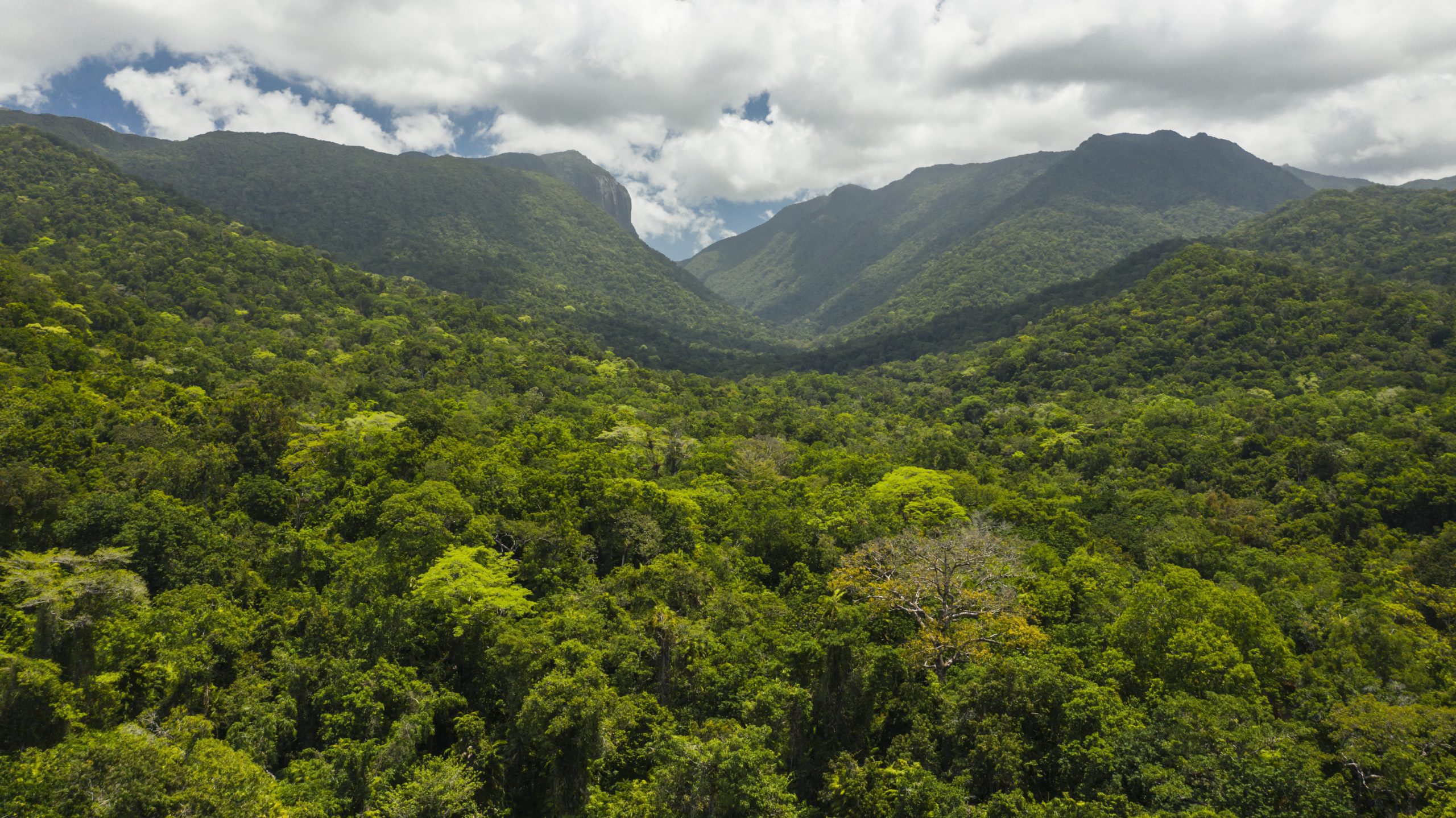
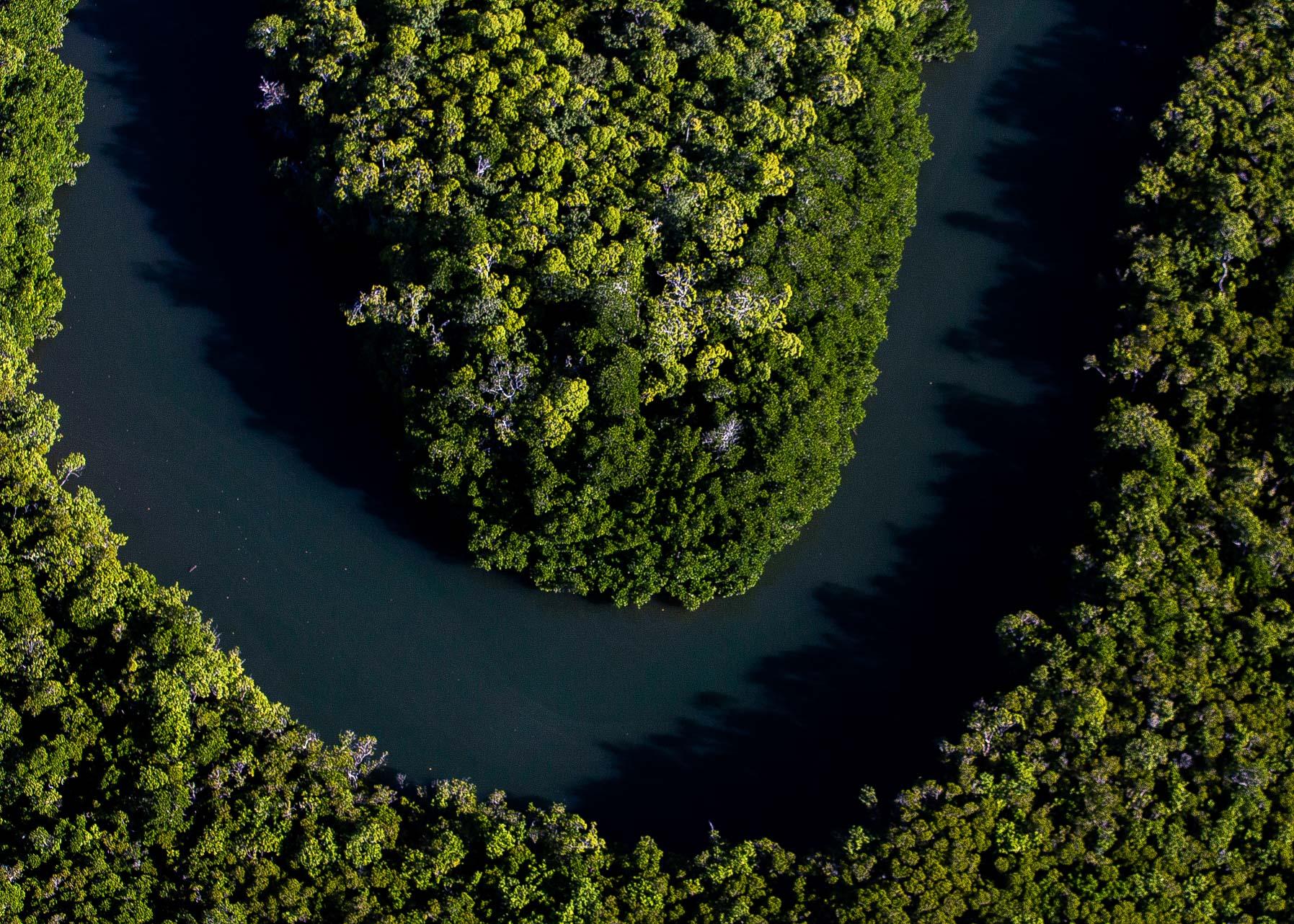
ANCIENT ECO-SYSTEM
The vast array of flora and fauna that makes up the natural environment of the Daintree Rainforest is truly awe inspiring. To experience the natural wonder of the rainforest for yourself, you must take the time to visit us at the Daintree Discovery Centre and see the Daintree Rainforest plants for yourself.
Located in the heart of the ‘Wet Tropics’ of North Queensland, the climate is warm all year round. From December to March it is also very wet – some years the Daintree has been known to receive more than six metres of rain during the summer wet season.
As a result the flora: plants, trees, bushes, ferns, vines, creepers etc is very lush and often referred to as ‘jungle’. The vegetation of the area is the most diverse in Australia both floristically and structurally. There have been 13 different rainforest types identified.
The Less We Disturb The Better
So don’t take short cuts through the forest as man-made walking trails cause erosion and die-back. Use elevated boardwalks wherever possible. Don’t pick the flowers, don’t take cuttings and leave the rainforest seeds where they lay. The basic rule is to leave the forest as you find it.
DAINTREE RAINFOREST PLANTS
If you are unable to make this special visit for yourself, the next best thing is to learn about what makes the plants and trees of the Daintree Rainforest so special. As one of the oldest continually surviving rainforests in the world, it is hard not to be impressed by its plant life. This tropical rainforest ecosystem is one of the most complex on earth and holds the most diverse plant life in Australia.
This epic rainforest contains a large variety of plants inherited from the ancient stock of Gondwana and some of the ancient plant life in this rainforest are also known as ‘Green Dinosaurs’ because of how old they are. With large fruiting trees, beautiful flowering orchids and over forty species of ferns, there is so much to learn about the wonderful flora located in the Daintree Rainforest.
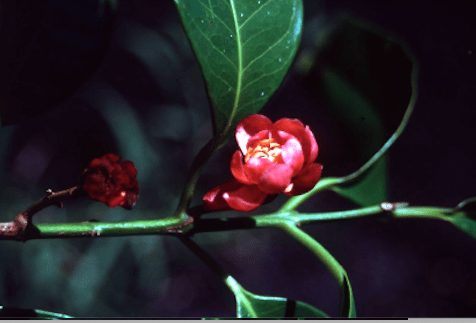
IDIOT FRUIT (Idiospermum australiense)
The most famous plant life found in the Daintree Rainforest that is well worth the mention is the idiot fruit. The Ribbonwood, commonly known as Idiot Fruit, is one of the rarest and most primitive of the flowering plants in the world, dating back to over 110 million years old! Its discovery in 1970 was arguably Australia’s most significant botanical find, greatly increasing awareness of just how ancient these forests really are. Image Courtesy of WTMA.
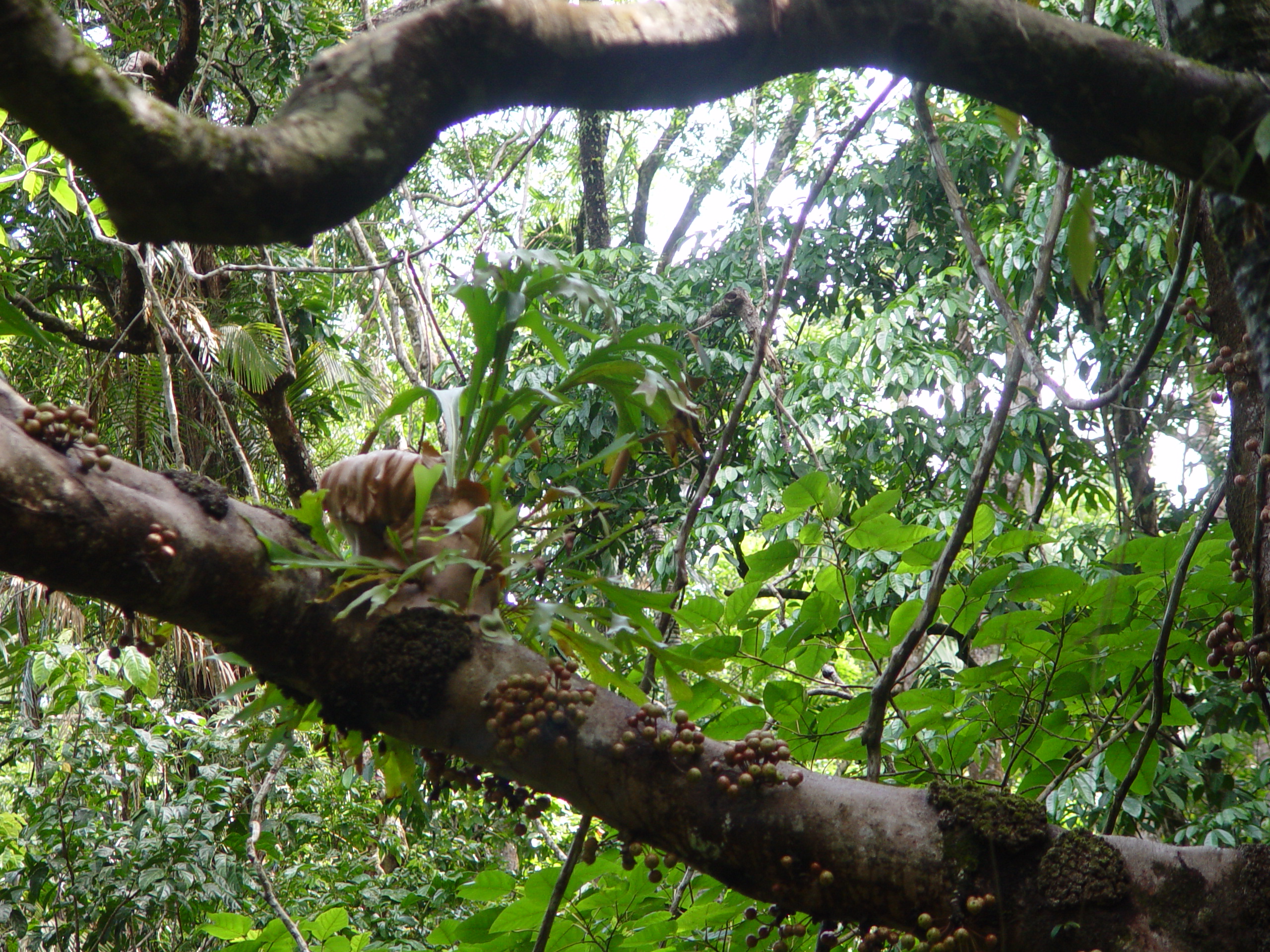
EPIPHYTES
Epiphytes are fascinating Daintree Rainforest plants that survive without roots in the ground. They also have the ability to trap nutrients and store their own water. Epiphytes are often supported by host plants. One of the most important epiphytes in this rainforest is the mighty Basket Fern. Ferns such as these can create their own ecosystems with many life forms using them as a home. Some frogs will even spend much of their life in the canopy, never reaching the ground.
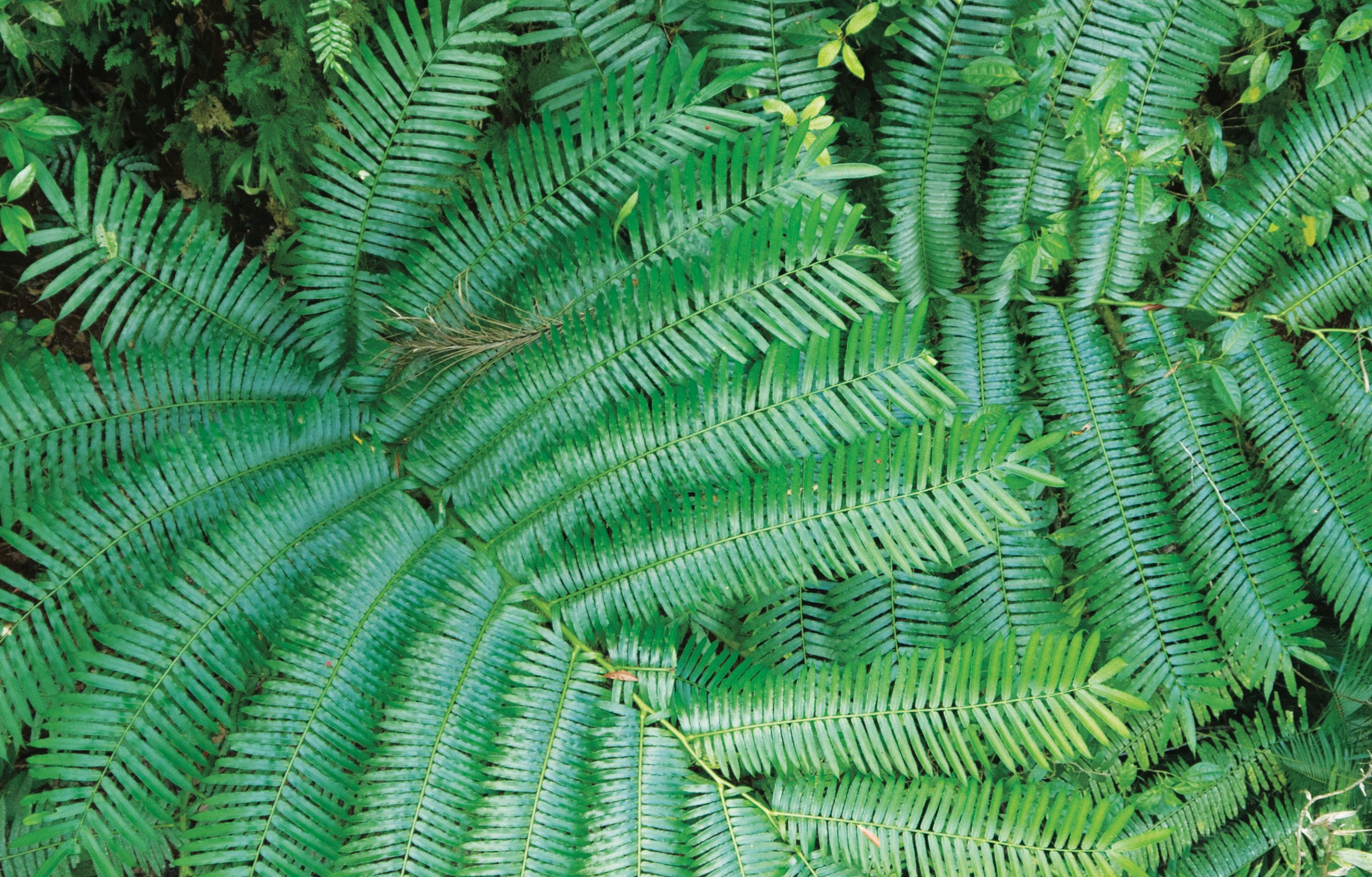
KING FERNS (Angiopteris evecta)
The King Fern is one of the largest and most ancient ferns in the world. These enormous ferns need constant moisture to help support their huge fronds, which can measure up to 5m on a fully mature specimen. Unfortunately, the King Fern is now only found in a few places in Australia due to a gradual drying of the continent.
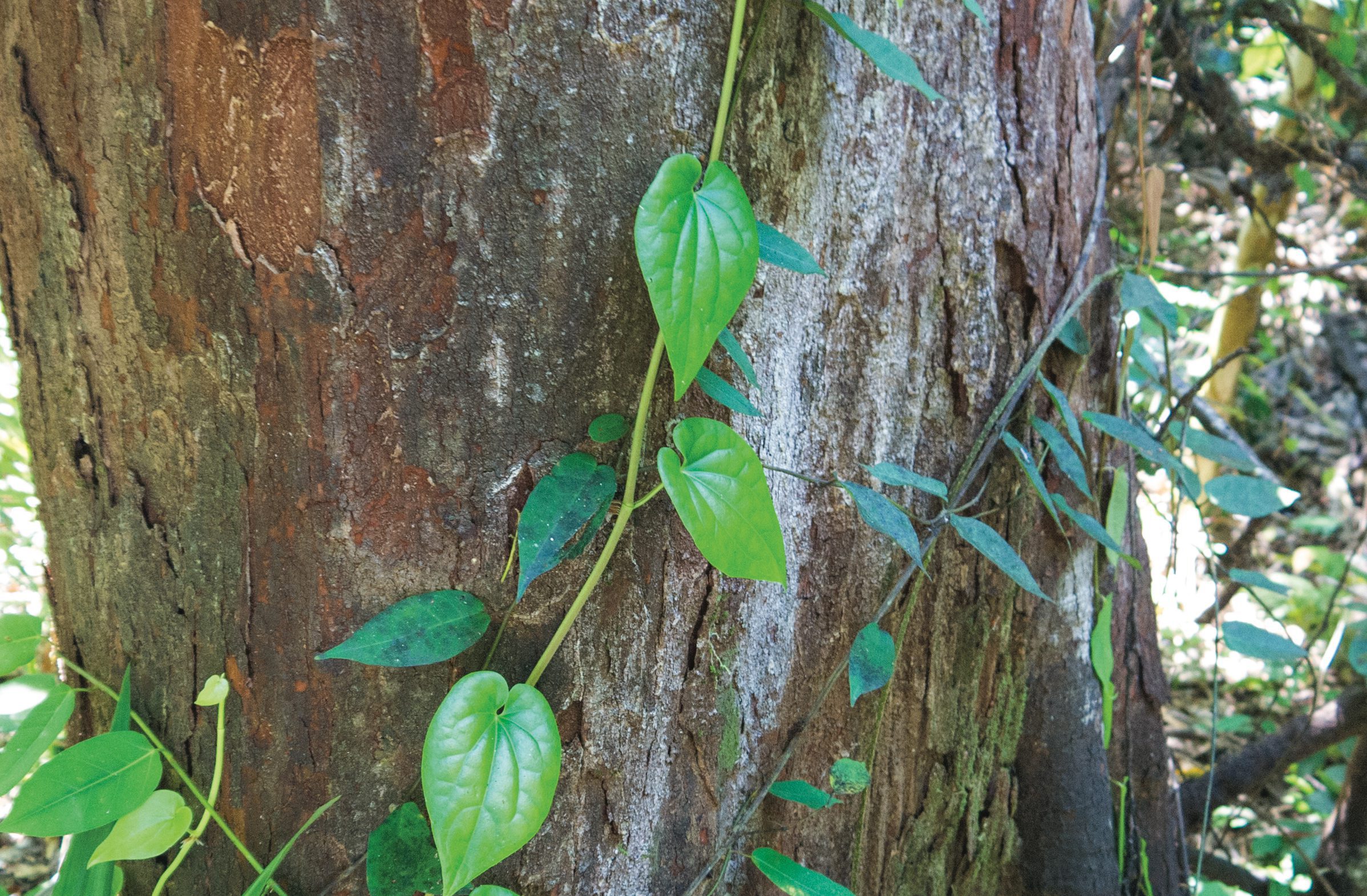
NOAH’S SATINASH (Syzygium maraca)
The most striking and noticeable features the North East Queensland species of Satinash holds are the large, red, pear-shaped fruits it bears. The fruits appear between October and November after a bloom of white flowers in May. The flesh of the fruits is also eaten at night by Musky Rat-kangaroos.
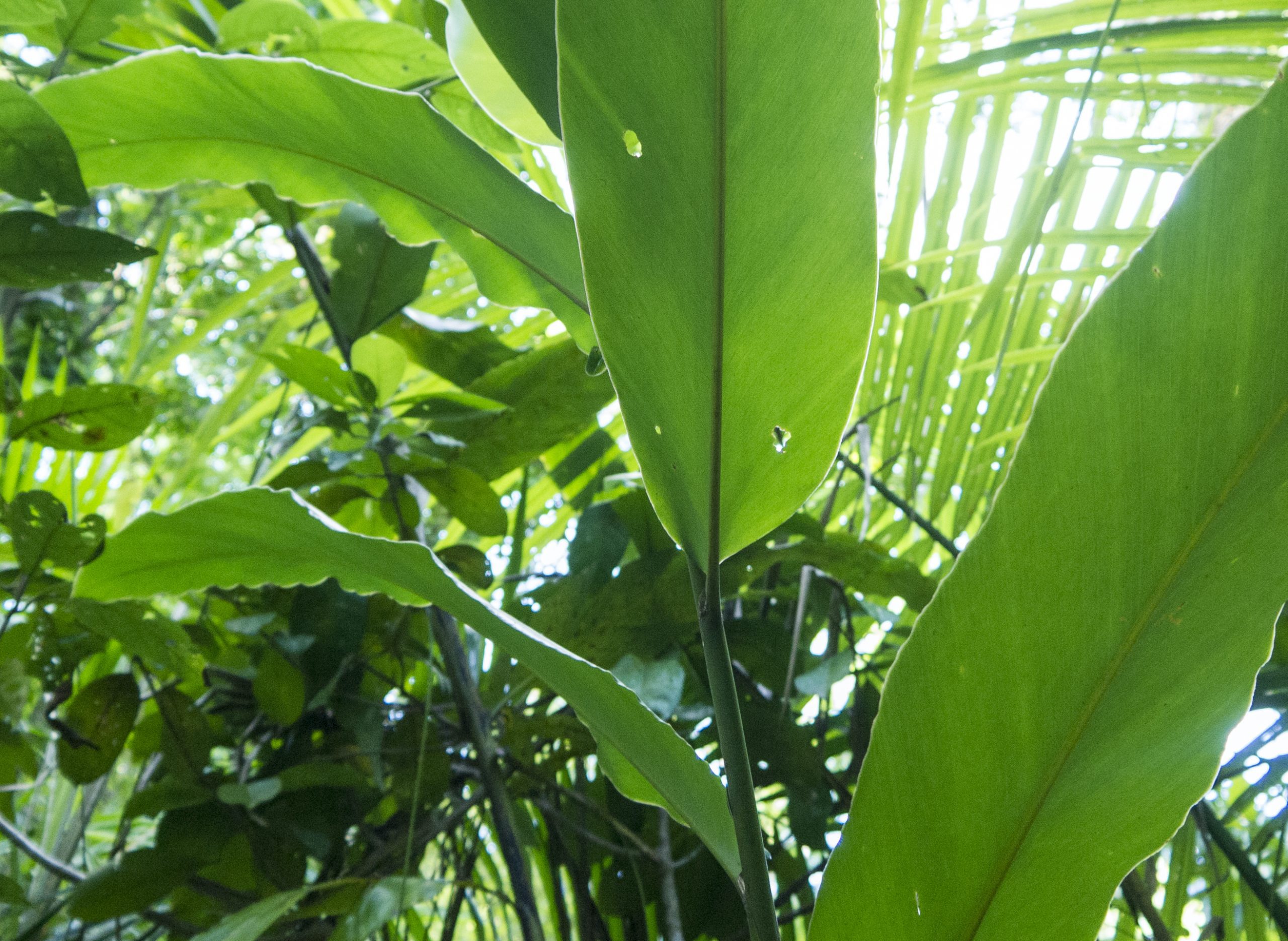
NATIVE GINGERS (Family: Zingiberaceae)
There are dozens of Ginger species found in North East Queensland and they are endemic to the region. These Daintree Rainforest plants are prized as ornamental plants and can be used in flower arrangements. Species such as the Native or Common Ginger (Alpinia caerulea) and the Snow Ginger (Alpinia arctiflora) also bear fruits that are favoured by the Cassowary.
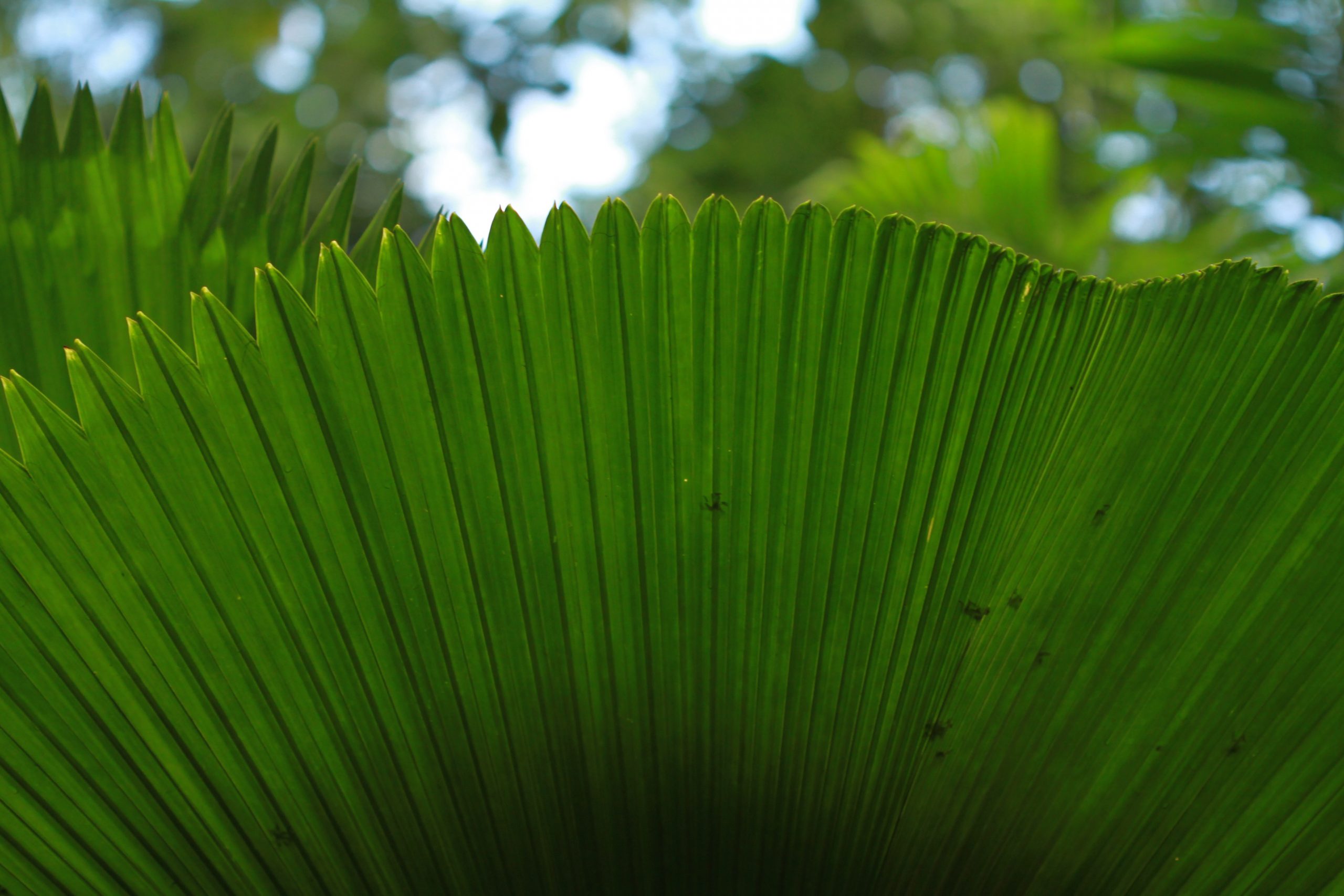
FAN PALM (Licuala ramsayi)
These spectacular palms are endemic to the lowland rainforests of Far North Queensland. They are slow growing and have strict requirements; a warm, shady position, with plenty of moisture. Swampy areas often become dominated by Fan Palm Gallery Forests, which shade out other light-loving species.
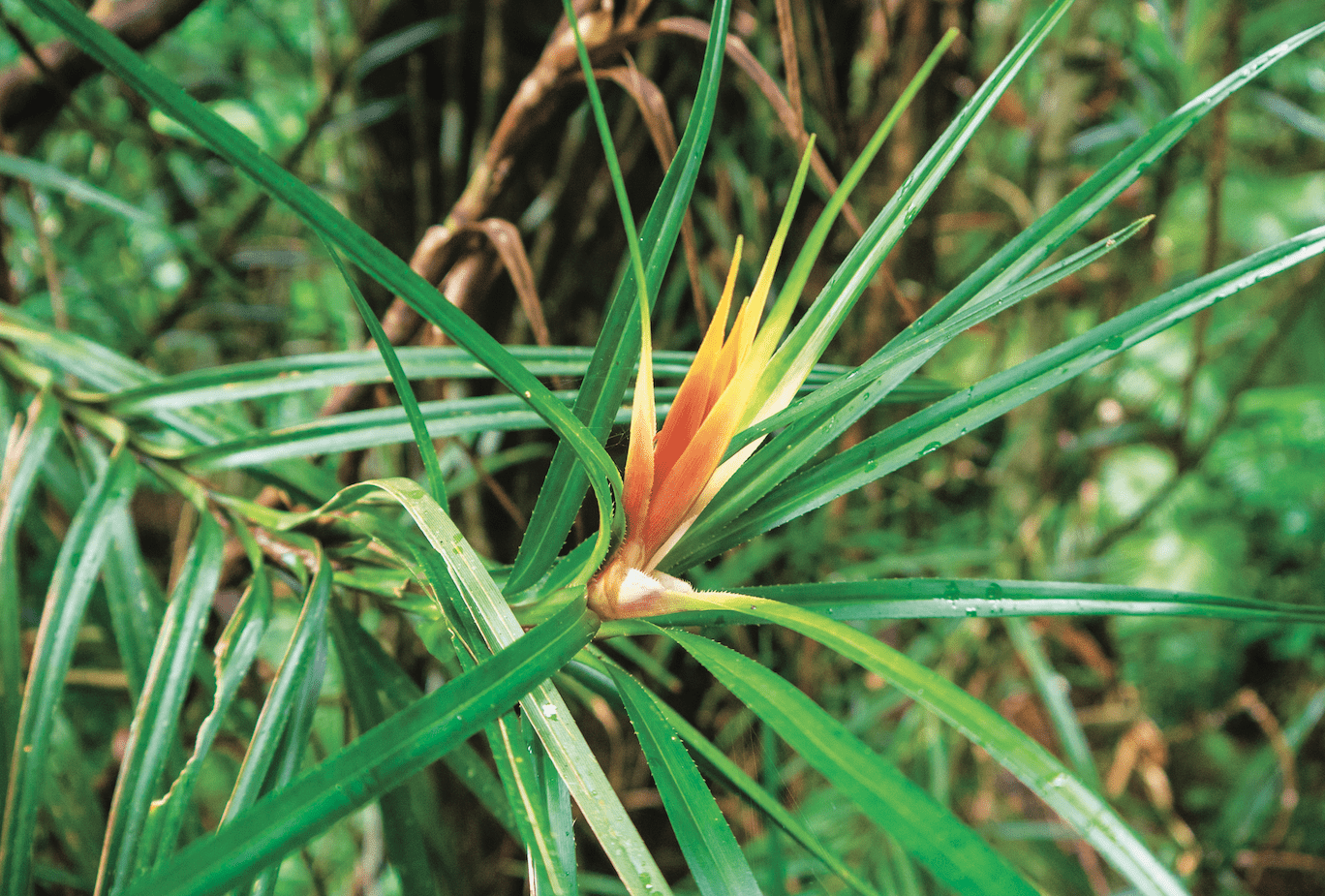
PANDANUS
The Scrub Breadfruit (Pandanus monticola), was a useful plant to local Aboriginal people. The fruit was eaten and the long leaves woven into baskets and used for shelters. Accessing the small kernels within the colourful fruit took significant time and effort but produced a nutritious damper. The Beach Pandanus (Pandanus tectorius) is more commonly seen along coastlines, waterways and in swampy areas.
DAINTREE RAINFOREST TREES
There are approximately 920 different types of trees in the Wet Tropics and in 1 hectare alone you can reasonably expect to find between 120 to 150 different types of tree. This incredible diversity is one of the things that make this area so special and sets it apart from other rainforest areas. We have listed only a small number of tree species below that you will see at the Daintree Rainforest. To see and learn about the full range of species you will find, we encourage you to visit this magical rainforest for yourself!
Branch Structure
A complex branching structure develops on mature trees, as they reach the top of the canopy. The Native Nutmeg is a common tree in the Daintree Rainforest that maximises surface area which helps to absorb the most amount of sunlight and potentially block out any other competing trees.
Gaps in the Canopy
The rainforest is always changing. In the Daintree Rainforest, large trees came crashing down during Cyclone Yasi (2011) and flattened everything in their path; trees, palms, vines and ferns. The gaps created allowed more sunlight to reach the forest floor and encouraged a profusion of new growth. The top of this tree came down during Cyclone Ita (2014). It is now decaying on the rainforest floor.
Tree Hollows
Tree Hollows are extremely important in this rainforest. They are used by up to 300 native creatures for shelter and for finding food. These include Lace Monitors, Snakes, Possums, Double-eyed Fig Parrots, Spotted-tailed Quolls, White-tailed Rats, Lesser Sooty Owls, Boyd’s Forest Dragons, Tree Frogs and a huge number of small local Bats!
Leaf Structure
One of the interesting features of the rainforest canopy is the variety of leaf forms that can be identified. Different leaf shapes help Daintree Rainforest plants improve their rate of photosynthesis at each level of the canopy. Generally, the shaded leaves are much larger and have more surface area than those exposed to full sun.
EMERGENT TREES
In the Daintree Rainforest, some trees tower above the ‘standard’ height of the canopy. These giants are referred to as ‘Emergents’. The benefits of rising above the surrounding canopy are fairly obvious. Not only does the emerging giant gain maximum exposure to the sun but it is easily spotted by potential pollinators.
THE STINGING TREE (Dendrocnide moroide)
This is a tree to be avoided at all costs. The large oval or heart-shaped leaves may look harmless but they are covered with thick microscopic hairs made of mineral silica – the chief constituent of glass. If you brush against these hair-like tips, they penetrate the skin, break off and release a poison irritant. The sting’s effect is severe and lasts for months.
SPUR MAHOGANY (Dysoxylum pettigrewianum)
This tree is a popular hunting ground for nocturnal Northern Leaf-tailed Geckos (Saltuarius cornutus) as they camouflage well with its distinctive flaky bark. Large black and orange Shield Bugs can often be seen amongst the foliage.
YELLOW MAHOGANY (Dysoxylum parasiticum)
This tree bears brown fruit on its trunk from June – Oct. This phenomenon, known as cauliflory, facilitates pollination by possums and bats who scale the tree’s trunk in search of food. It also allows the plant to avoid competition from other canopy flowering plants. Cauliflory literally translates from Latin as ‘Trunk Flower’.
RED TULIP OAK (Argyrodendron peralatum)
The Red Tulip Oak is ornamental in appearance and looks similar to the Silky Oak. When cut at a particular angle it has an attractive ‘water wave’ pattern. It splits freely and was originally used for house battens and roof shingles. Wood borers readily attacked the timber once it had been felled and it was often immersed in a solution of Boric acid.
Learn More at the Daintree Discovery Centre
We have only scratched the surface on what there is to know and learn about the plant life in the Daintree rainforest. To experience the natural wonder of the Daintree Rainforest plants and trees for yourself and to learn even more fascinating information about the flora and fauna of this magnificent rainforest, we encourage you to visit us at the Daintree Discovery Centre. With a wealth of information to share through our informative self-guided tours and information centre, you will not be disappointed with the knowledge you will absorb about the natural beauty that surrounds you at the Daintree Rainforest.
CANOPY TOWER
View the Daintree Rainforest Canopy
AERIAL WALKWAY
Access to mid level Daintree Rainforest
INTERPRETIVE CENTRE
Discover the Interpretive Display Centre
AUDIO TOURS
Daintree Rainforest self-guided tours
Leave your pets at home; take any rubbish out with you; don't feed the wildlife and don't pollute the water.
Enjoy yourself and leave nothing but footsteps and take nothing but photographs!
Wet Tropics Management Authority
